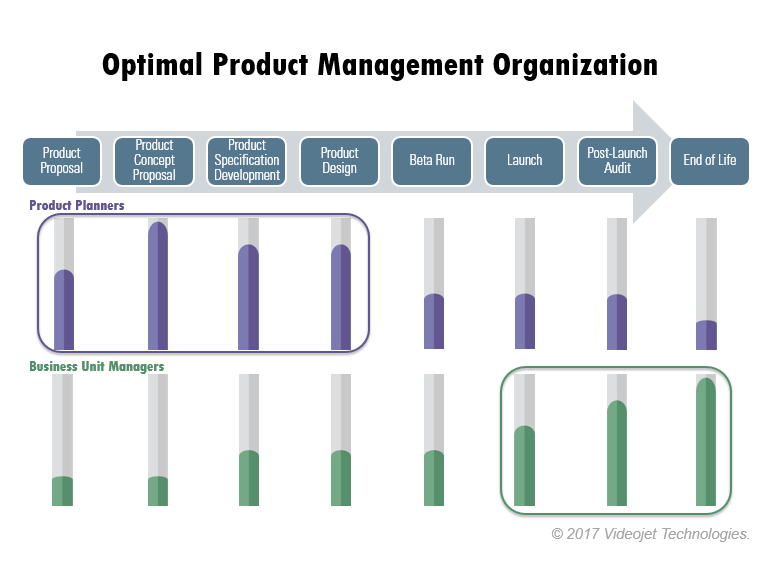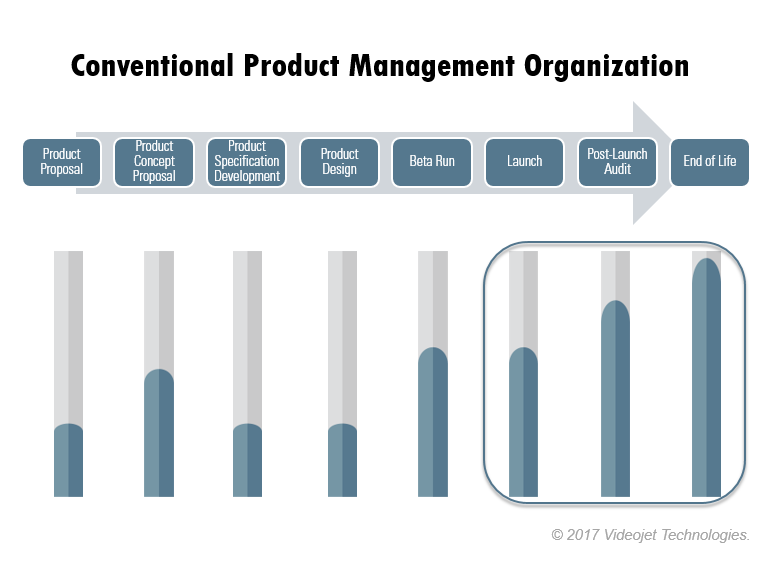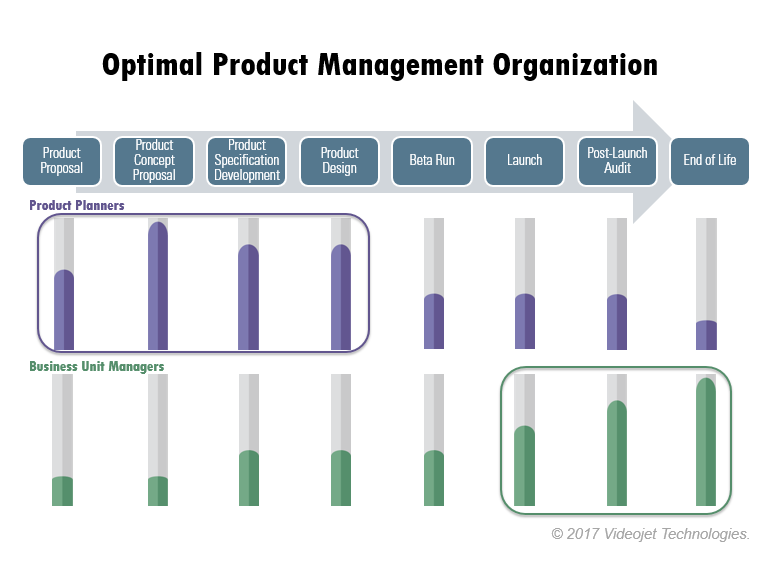Structuring an Innovation Engine

By: John Folkers, Videojet Technologies
This blog post, originally published on Consumer Goods Technology, includes information from John Folkers and Jessica Wettstein’s presentation at BEI 2017 in Orlando.
When managing projects, do you regularly suffer from poor execution? Does it feel like your product roadmaps are constantly pushed back? Does it feel like the projects aren’t the highest priority for the team members working on them?
Every company faces obstacles when it comes to executing on innovation. Addressing these hindrances starts with having an appropriately structured and focused organization. If the right organization isn't in place, you won’t effectively monetize the innovation opportunities in your funnel.
Each business function that supports innovation and new product development must be structured to allow the necessary focus to identify and execute those opportunities.
A good place to start is product management. Traditional product management is set up to cover the entire product life cycle, but typically ends up allocating most of its energy to launch and post-launch activities (like sales support). This leaves minimal bandwidth for the front end of the process, where technology and commercial leaders make decisions that are most critical to delivering advantaged new products on time.
By separating product planning from business unit management, resources can direct sufficient effort across all stages of the product life cycle. Product planners focus on the NPD and innovation roadmap, defining market needs, and refining and validating product concepts. On the other hand, business unit managers are dedicated to near-term business execution to help ensure the success of existing products.
This separation creates a sustainable and balanced growth engine for the company. For example, product planners define the look, features, and workflow of a brand new user interface (UI) by working with customers and research and development, whereas business unit managers identify how to win in the market with the current UI through marketing, training, and even feature expansion.
Similarly, having R&D engineers work across all phases of the life of a product leads to inefficiencies and reduced focus. Dedicating one group of engineers to NPD, while assigning a separate group to sustaining engineering for new technology, provides benefits in terms of focus and execution.
What works for product management and R&D also works for all functions supporting NPD, such as production and purchasing. If you apply these practices across all functions involved in delivering new products, your company will be more agile and can provide quick strategic responses to the changing competitive landscape. For innovation leaders, it can be helpful to list each of the functions involved in a typical NPD project and answer these questions:
What percentage of each individual’s time is dedicated to NPD?
Is NPD their top priority?
How many projects do they work on simultaneously?
When you take the time to analyze the roles of your team members and identify challenges or issues, you can prioritize what needs to be adjusted at the organizational level.
From an organizational view, an ideal state for NPD is one where all project team members are co-located and dedicated to a single project. This "Lean Product Development" approach is called the “Obeya” concept and is most useful for the highest priority projects in the business.
An Obeya, or “big room,” is effectively an innovation learning lab: a place where the team quickly creates ideas, generates rapid prototypes, and evaluates them against the target criteria. Everything happens in real time — most importantly, communication and action taking. Problems are quickly exposed with immediate resolution. The Obeya is not just a meeting area, but the place where the project team does the actual work including designing, building, and even testing.
Innovation flows once the right structure is in place, laying the foundation to help create market-leading growth. In today’s world, companies will thrive if they challenge conventional paradigms, allowing teams to respond rapidly to changing consumer feedback with new, innovative products.

